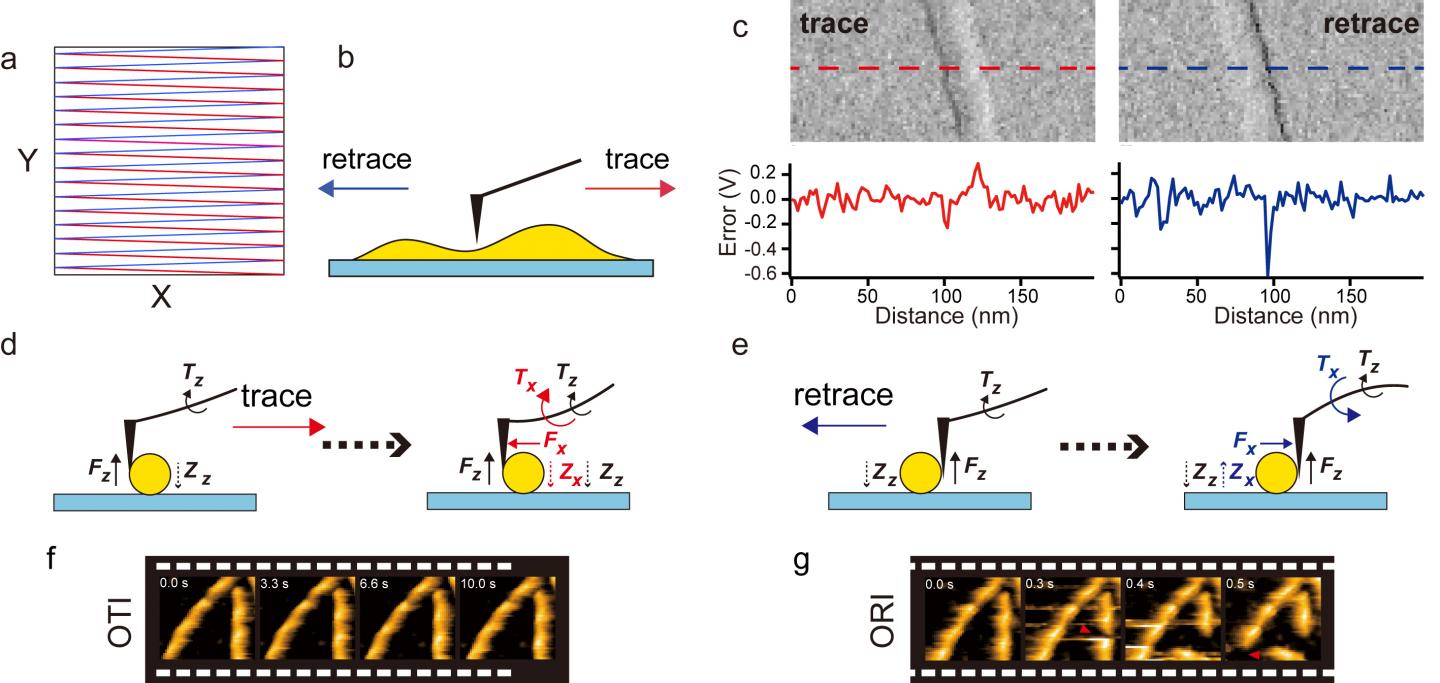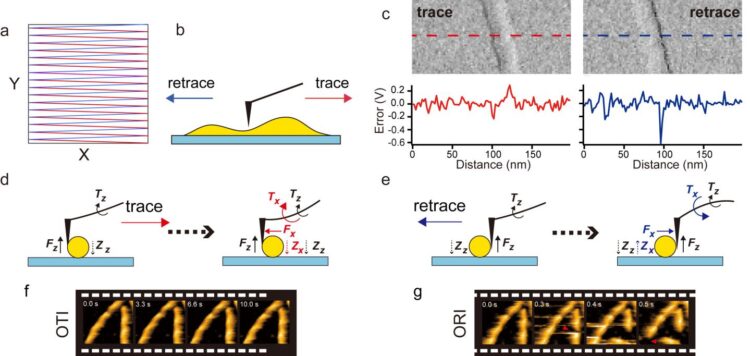
Credit: Kanazawa University
High-speed atomic force microscopy (HS-AFM) is an imaging technique that can be used for visualizing biological processes, for example the activity of proteins. Nowadays, typical HS-AFM frame rates are as high as 12 frames per second. In order to improve the capabilities of the method, so that it can be applied to an ever expanding range of biological samples, better video rates are needed, though. Moreover, faster recording times imply less interaction between the sample and the probe — a tip scanning the sample’s surface — making the imaging procedure less invasive. Now, Shingo Fukuda and Toshio Ando from Nano Life Science Institute (WPI-NanoLSI), Kanazawa University have developed an alternative HS-AFM approach to increase the frame rate up to 30 frames per second.
An AFM image is generated by laterally moving a tip around just above a sample’s surface. During this xy-scanning motion, the tip’s position in the direction perpendicular to the xy-plane (the z-coordinate) will follow the sample’s height profile. The variation of the z-coordinate of the tip then produces a height map — the image of the sample.
Fukuda and Ando worked on HS-AFM in the so-called amplitude-modulation mode. The tip is then made to oscillate with a set amplitude. While scanning a surface, the oscillation amplitude will change because of height variations in the sample’s structure. To get back to the original amplitude, a correction to the tip-sample distance needs to be made. How large the correction needs to be is related to the sample’s surface topology, and is dictated by the so-called feedback control error of the setup. The scientists noted that the feedback control error is different when the tip moves in opposite directions, called tracing and retracing. This difference is ultimately due to the different physical forces at play when the tip is ‘pulled’ (tracing) and when it is ‘pushed’ (retracing).
Based on their insights into the physics of the tracing and retracing processes, Fukuda and Ando developed an imaging regime that bypasses retracing. This then needs to be properly accounted for in the controlling algorithm. The researchers tested their only-trace-imaging mode on actin filament samples. (Actin is a protein very common in cells.) The imaging was not only faster, but also less invasive — the filaments broke much less frequently . They also recorded polymerization processes (through protein-protein interactions); again, the method was found to be faster and less disturbing compared to the standard AFM tracing-retracing operation.
The scientists are confident that their “simple and highly effective method will soon be installed in the existing and upcoming HS-AFM systems, and will improve a wide range of HS-AFM imaging studies in biophysics and other fields.”
###
Media Contact
Hiroe Yoneda
[email protected]
Related Journal Article
http://dx.





